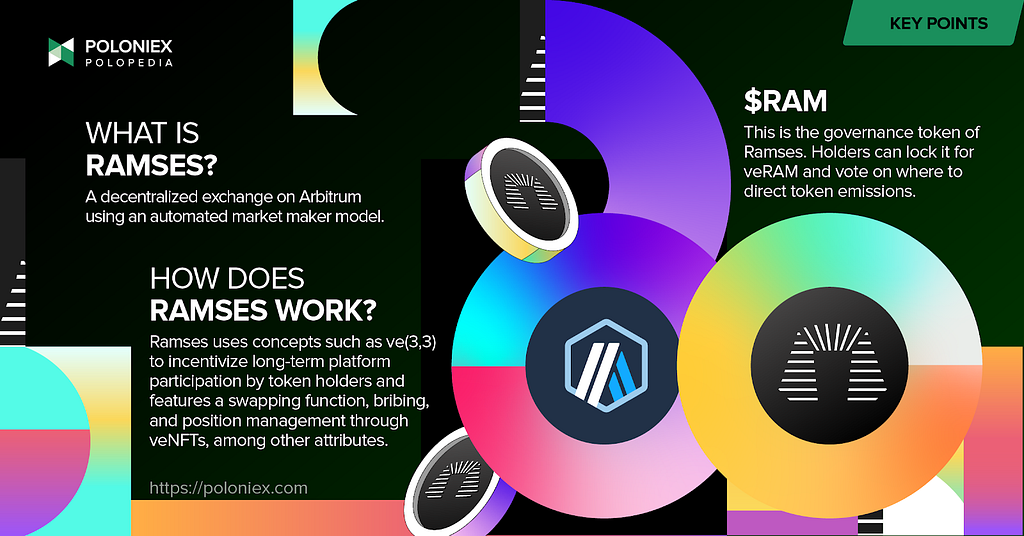DEXs serve as an answer to a need for decentralization within financial systems and an adherence to the original mission of Bitcoin. A DEX can be seen both as an analog to centralized exchanges and the traditional financial system itself. However, for all their attractiveness in what they stand for, DEXs and many DeFi projects have shortcomings that make it hard for them to keep pace and truly deliver.
These shortcomings are often less functionality, harder to use interfaces, less liquidity, and capital inefficiency. Although the former two are issues that necessitate iteration, the latter two strike more at the core of what plagues DeFi. And as these fees are based on gas fees for executing transactions over blockchain networks, they can fluctuate, making them unpredictable. With the issue of liquidity, if there isn’t enough of it, it leads to something called slippage, which is when the price of an asset when a trade is executed vs when the trade is ordered is a discrepancy, and users end up paying more for less. And with capital inefficiency, higher performing pools may not get the liquidity they should be getting and thus the whole platform would suffer.
Andre Cronje, formerly one of the most prominent players in DeFi (who has since left DeFi) and the brain behind various projects in the Fantom ecosystem and popular DeFi platform yearn.finance, sought to parry these latter problems with his Solidly exchange. Solidly’s solution is a platform design model called “ve(3,3)”. We’ll cover more of the specifics of this later, but it essentially seeks to retain liquidity and optimize token emissions through incentivizing holders of the $SOLID token to stake it and keep it staked. However, since Andre left DeFi and since security questions were raised around the exchange, Solidly has slipped to the background of everyone’s radar.
The thing is, despite this turbulence, Solidly’s ve(3,3) modeling has the makings to be a strong component of any decentralized exchange. Built on Arbitrum, a layer 2 for Ethereum, Ramses Exchange is taking this concept and revitalizing it.
Ramses is a decentralized exchange that uses an automated market maker model, much like its contemporaries Uniswap, Sushiswap, Curve or Balancer. But, as mentioned above, what sets it apart is the way it uses collected platform fees. Instead of distributing a portion of all protocol fees to users that lock tokens, Ramses only gives swap fees correlating to which pools these users vote for to receive token emissions.

TL;DR
Ramses is a DEX AMM on Arbitrum. It revitalizes a concept conceived by DeFi heavyweight Andre Cronje called ve(3,3), which is aimed at solving the issue of low liquidity and slippage as well as incentivizing long-term platform participation.
More about the ve(3,3) model
If you’re up-to-date on DeFi trends, you might have come across the term “ve(3,3)”. It’s important to remember, when talking about why certain platforms adopt certain models, what’s important to the health and growth of a decentralized exchange (or any exchange for that matter). A big thing that is vital to decentralized exchanges is liquidity, or the ability to execute trades quickly and at prices close to a token’s market value. Put simply, in order to have liquidity for a token pair, you need to have more of it. So in a platform’s tokenomics and modeling, a lot of attention is paid to how liquidity can be attracted and retained. It is also important to a DEX to exercise capital efficiency, or directing liquidity to the right pools.
The ve(3,3) model, conceived by Solidly’s Andre Cronje, is a model that focuses on incentivizing user participation and liquidity retention by giving users certain rewards and governance rights. It’s broken down below:
ve = vote-escrowed. To explain, we can look at veTokens which are vote-escrowed tokens. This entails that users lock their tokens up on a platform in return for proportional voting rights, platform fees, and other benefits in the form of veTokens.
For example, if a holder locks up x amount of platform tokens for, say, 1 year, they would get .25veTokens for every 1 token they locked up. But if they locked that same amount of tokens for, say, 4 years, they would get 1veToken for every token.
So we can see here that by design, using a vote-escrow tokenomics model can incentivize long-term participation and liquidity in a given DEX. As mentioned above, the ve(3,3) model also posits that users that lock their tokens only get their proportional percentage of swap fees from the pools they voted for. So, when users participate in directing token emissions to certain pools, they are incentivized to vote on productive ones that would generate more swap fees.
(3,3) = This refers to the most good users can perform for a given decentralized exchange. Users that stake their tokens provide the most good (+3); users that bond their tokens provide good, but less-so than staking (+1); users that sell take away from the platform (-1). If you take anything away from this, it should be that if everyone stakes, it does the most good, and if everyone sells, the operation collapses.
How Ramses Exchange works
Ramses is built on the Arbitrum blockchain, an EVM compatible Layer 2 built on Ethereum. Arbitrum, for its piece, uses an optimistic rollup to process Ethereum transactions and thus can process ~40,000TPS, meaning faster and cheaper transactions.
Going back to the current problems of liquidity, slippage, and overall capital inefficiency that many decentralized exchanges experience, let’s look at Ramses’ solve: ve(3,3). Through its ve(3,3) modeling, Ramses is able to ensure early and long-lasting user participation. This leads to better liquidity and thus lower slippage.
So let’s start with how Ramses tackles getting and keeping early participants. Under the ve(3,3) model, one of the most valuable things that users can do is stake their tokens. However, as more native tokens, in this case $RAM, are distributed, these early investors have their positions diluted, disincentivizing them from participating in the first place. So, Ramses gives users that have locked their tokens protections around diluting their positions. How this works is that after more RAM tokens are added to the total supply, those that have locked their token can claim a rebase that gives a certain amount of tokens so that the token holder can recoup some of their position. With this assurance, there is more incentive for one to lock their $RAM early on.
Like other DEXs, Ramses comes with the standard swapping function. However, by using an iterated price determination function, Ramses can achieve near-zero slippage. That is, as mentioned in our article on Uniswap, AMMs adhere to the algorithm x*y=k to set prices. However, Ramses takes an iterated version of this function which was designed by Andre Cronje: x3y + y3x ≥ k.
Ramses also features something called bribing, where users or projects can direct token emissions to certain pools. What this helps with is liquidity bootstrapping for projects that are just starting out. There is a capital efficiency that is achieved here, because typically, if a protocol bribes token holders to vote on which pool receive the token emissions, they can spend a certain amount on bribes to get a multiplied amount of tokens put into a pool.
Another helpful feature of Ramses in the way of increasing capital efficiency is how it directs its fees. Unlike other DEXs like Curve or Balancer where LPs can collect platform fees even if they are providing liquidity to a poorly performing pool, on Ramses, locked tokens only receive swap fees from the pools they vote for. What this does is incentivize more active participation as well as bring more liquidity to more popular pools.
And unlike other platforms, 100% of fees go to veRAM holders. You might be wondering how then, liquidity providers are incentivized. In Ramses’ model, LPs earn RAM through token emissions based on staking gauges that vary by pool.
$RAM
This is the native token of Ramses, and when users lock it into the platform, they are granted veRAM and can use that to vote on where to direct token emissions and thus which pools to give liquidity to. Users’ positions can be managed through use of veNFTs (vote-escrowed non-fungible tokens). Why an NFT? Well, the ERC-721 protocol, the token protocol behind NFT technology, is able to describe an asset with unique attributes. In this case it is a unique position with underlying assets.
How to acquire $RAM?
$RAM is available on multiple exchanges like Poloniex! You can acquire $RAM through trading a RAM/USDT trading pair.

Feeling ready to get started? Sign-up is easy! Just hop on over to https://poloniex.com/signup/ to start your crypto journey🚀
was originally published in The Poloniex blog on Medium, where people are continuing the conversation by highlighting and responding to this story.

